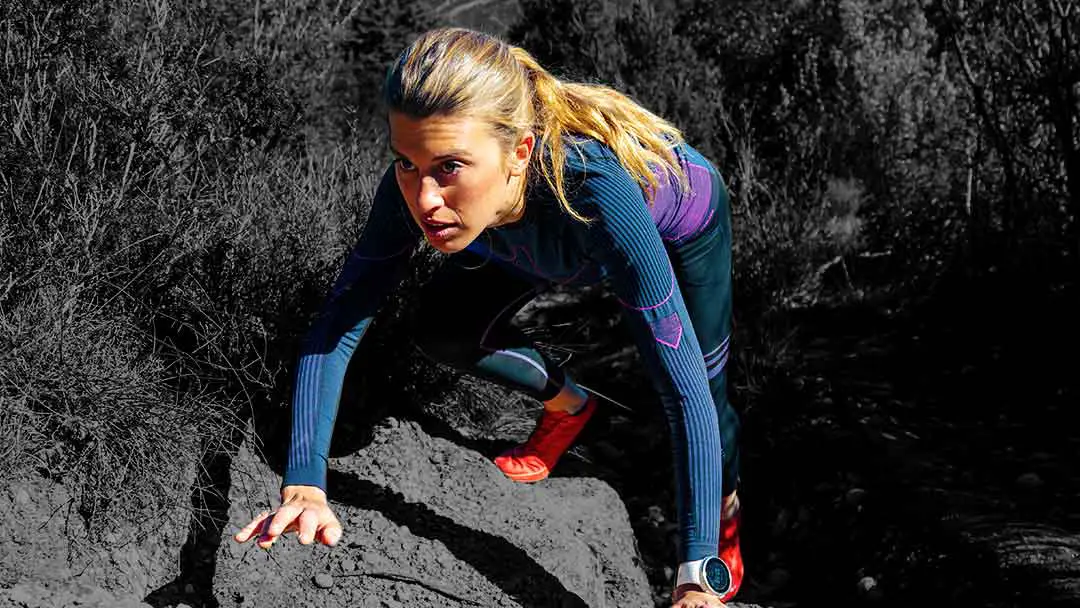16 Most Dangerous Fastpacking Mistakes

As an Amazon Associate we earn from qualifying purchases made on our website. If you make a purchase through links from this website, we may get a small share of the sale from Amazon and other similar affiliate programs. You can read our complete legal information for more details. By using this site, you agree the information contained here is for informational purposes only. For specific medical questions, consult your doctor. NO information on this site should be used to diagnose, treat, prevent or cure any disease or condition.
Fastpacking is the perfect blend of running, hiking, backpacking, and camping. It allows you to get away into nature and experience more adventures than standard backpacking.
However, this means that any standard mistakes that can be made while average backpacking and camping can be amplified by Fastpacking and become more dangerous. In this article, we list 16 major concerns to help you prepare for a successful fastpacking trip hopefully.
Fastpacking mistakes
Here are some common mistakes you can make while Fastpacking, which can be dangerous and get you into a lot of trouble; of course, these are the basics. If you want to prepare yourself, it won’t hurt to take a wilderness survival course and read a few of these survival books:
- Bushcraft 101: A Field Guide to the Art of Wilderness Survival (Amazon link)
- The MeatEater Guide to Wilderness Skills and Survival (Amazon link)
1. Poor packing
One of the most common flaws among Fastpackers is also the easiest to correct. I think this is more typical for inexperienced Fastpackers, as the more you Fastpack, the better you understand what to pack.
More is not always better, but having too little can be disastrous too.
This little article will help explain what’s too much and what’s too little and breaks down base weight. After you understand base weight, be sure to read “The Ulitmate Fastpacker Kit List.”
2. Drinking Parasitic Water
Water is life and one of the most important aspects of survival in the wilderness. Running out of water sources could be life-threatening. So is drinking water infested by microbes and parasites like giardia.
I’ve had salmonella and giardia infections, which are not fun!
Be sure you pack enough water and know where to locate water sources on the trail. Always bring a water filter to reduce exposure to dangerous microbes. Fastpackers also use water purification pills like Aqua Tabs.
Of course, finding clean, potable natural springs is always a benefit. Here is a great resource that helps locate springs: Find A Spring.
3. Body Temperature
Hyperthermia can be a disaster. I had a friend get it once, and it was a scary situation. When you get wet out in the wilderness, it can be life-threatening.
Usually, it starts with wet feet and clothes. Sometimes sleeping in a wet sleeping bag will do it as well.
Be sure to wear waterproof and water-repellent clothing and footwear. Prevent yourself from getting wet at all costs. This is another essential human survival tip.

4. Fire, Fire, Fire
Nothing raises the spirits more than starting a fire. Plus, it could be a lifesaver, especially if you are wet and suffering from hyperthermia. You can also use fire to boil water should your filter and water pills fail.
All packs should include a fire starter.
Side note: obviously, abide by all trail rules and laws regarding fires. Sometimes fires are not permitted due to numerous reasons like dry climate.
5. Sun Damage
Underestimating the power of the sun is risky. Overexposure to the sun can cause some intense sunburn, and most of the time, you don’t realize you are burnt until it’s too late.
Waking up the next day with blisters and red skin can really drop your enthusiasm.
Be sure to pack and use adequate sun protection.
6. Leaving the essentials behind-No Check List
If you are a more experienced fastpacker and know what you should be packing, there is nothing worse than not packing what you should.
It would help if you had a checklist for every trip, and all the items should be checked before you set off on your adventure.
Nothing is worse than pitching up somewhere on a remote trail, only to find you have forgotten something. Plus, to help your planning, we created this quick guide.
7. Poor tent location
Ideally, you would pre-plan where you were camping at night, but plans change, so you will need to learn what good potential pitching spots look like.
For example, never pitch a tent on a slope, divot, or ditch. If it were to rain, you’d be completely saturated. Also, ensure you are not too close to rivers or lakes, especially avoiding animal trails.
If it is a busy trail, you should move your tent if it is too close to an existing one and not pitch on the actual trail path itself.
Bears, predators, and aggressive animals are always a risk when camping on or near animal trails...speaking of which.
8. Predators and Aggressive Animals
Although the statistics show that animal attacks on humans are low, it doesn’t mean it’s not possible.
A run-in with an aggressive bear or mountain lion could put your life at risk. So could an angry moose, for that matter. In fact, there are more reported moose attacks than bear attacks overall.
It probably doesn’t hurt to have bear spray if you are in bear country and also learn how to deal with aggressive animal behavior.
This is a top seller on Amazon: Sabre Frontiersman 9.2 oz. Bear Spray.

9. Lack of trail knowledge
Before embarking on a fastpacking expedition, you should plan a good portion of the route.
You should know the distances between various points of interest, the locations of water sources, places to restock food, any changes in terrain, and what the weather will be like.
When you’re unprepared for a trip, you put yourself in danger. Still, I think the most crucial thing is to plan for where you can replace your water supply.
Remember, the lack of a critical water source could spell disaster for your survival.
10. Gear fails
Fastpackers also frequently make the mistake of not trying out new equipment before using it.
Never take anything fastpacking that has never been used before or has never been tested. Learn how to set up your tent, use your new camping stove, operate all your gear, etc., before going on a Fastpacking trip.
You can tell if something is broken or needs fixing in this way.
11. Food issues
Taking the time to plan out your daily meals in advance of your Fastpacking trip will make your trip much more enjoyable.
Try not to make foods that don’t require too many steps. Plan a menu of nonperishable foods that will give you the energy to get moving. In fact, I discuss specifically how to pack food and what to bring here.
Also, don’t bother making elaborate meals that call for a lot of time and equipment.
My go-to for meat consumption while fastpacking is Carnivore Crisps. They offer a wide spectrum of different meats and cuts; the only side ingredient is Redmond Real Salt. They give our readers 10% off with this link or use Wild at checkout.
Also, if you are in bear country, it may help to use a bear bag hanging kit or a bear-resistant container that you can hang. Some fast packers use these.
12. Arriving at camp too late
Trust me, in the beginning, all Fastpackers overestimate how far they can move daily with a relatively heavy pack.
This means you could end up pitching your tent much later than anticipated, and pitching up in the dark is always harder than doing it with good light.
Getting there early will allow you to have everything set up the way it needs to be and get a feel for the space. That makes it easier to get around the campsite after dark.
13. Poor lighting
You will need a good head torch, as you might still be running or walking when it is dark. You will also need a backup, spare batteries, or a way of charging it. Getting lost in the dark is a surefire way to get into trouble or get injured.
You may also need a way of illuminating the camping area at night, but I usually just use my headtorch to save weight. Fenix makes a good rechargeable one.
14. Lack of a first-aid kit
If you neglect to bring the necessary items for a first aid kit, your camping trip could be significantly disrupted.
When venturing into the great outdoors, no amount of planning or preparation is foolproof. Experienced Fastpackers will unanimously agree that a first aid kit is an essential item for any camping trip.
Carrying a first aid bag will allow you to deal with minor injuries and less critical medical emergencies.

15. Cramps
Now I’m not sure if cramps are life-threatening; maybe they are. For me, they are a pain in the a**. I get them in my feet and calves if it’s cold out and I’ve been sweating and exerting myself.
I have found electrolytes to help my situation,n and I include little electrolyte powders to add to my water when I’m out on the trail.
Redmond Re-Lyte Packs are perfect, and they offer our readers 15% off or use Wild at checkout. Perhaps include a few on your next trip.
16. Getting lost
One of my pet peeves is how poor hiking trail signs can be. In my view, if there is a precisely defined hiking trail, it should be sign posted in a way you do not need navigation.
But this is a pipedream; you always need a way to navigate multi-day fastpacks. I will be honest with you; I cannot read paper maps.
So, I make sure I have multiple ways of navigating electronically. I download the route onto my phones and smartwatch, so I have two devices to use and methods of charging these.
I also have a Garmin In-Reach mini as a last resort and the paper map and compass, just in case. I’m sure I’ll figure out the paper map if needed!
Conclusion
Now that you know the common pitfalls you must avoid while planning a Fastpacking adventure, you should be better prepared to make a successful start.
However, it’s essential to keep in mind that blunders are sometimes unavoidable. Making a few careless mistakes while fastpacking isn’t necessarily the end of the world, so long as you take note of them and correct them for the next time.
If you are newer to this hobby, I suggest reading our Ultimate Fastpacking Guide. Can’t wait to see you on the trail!



